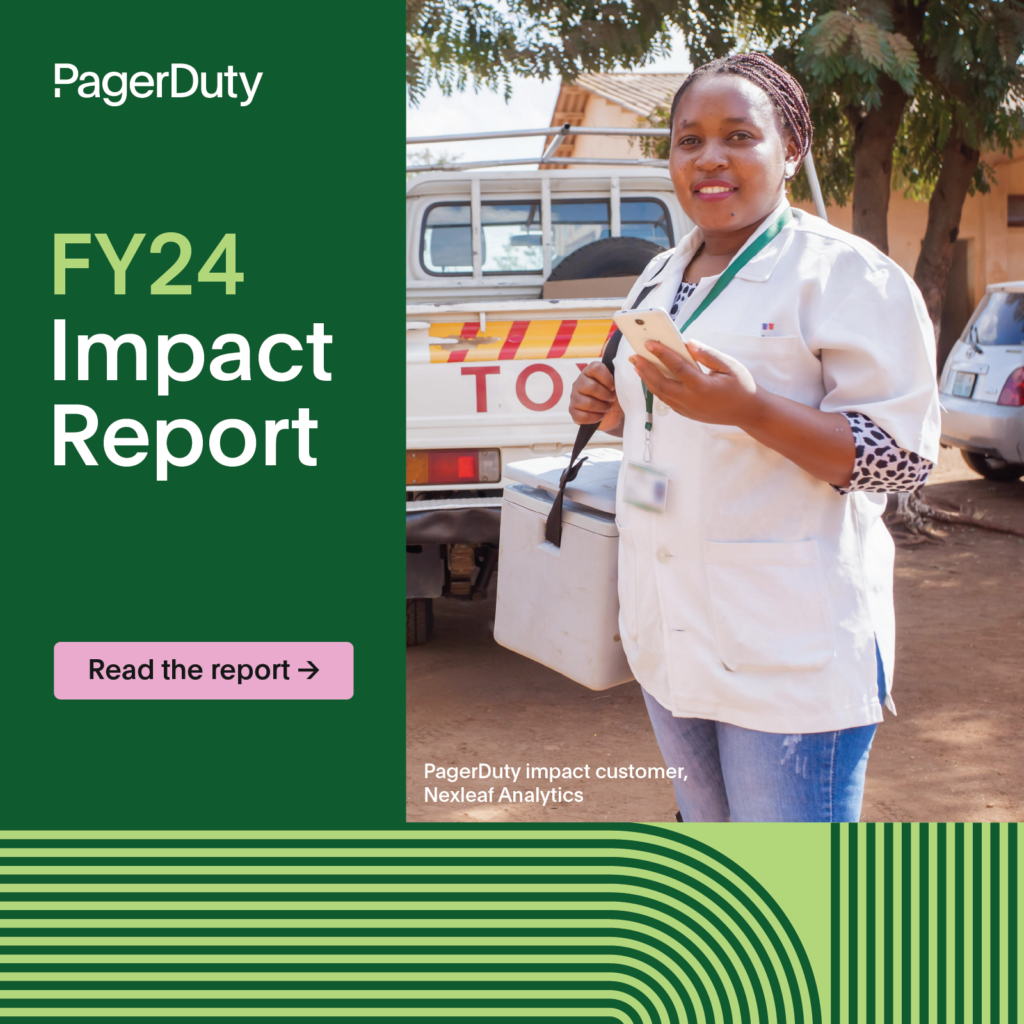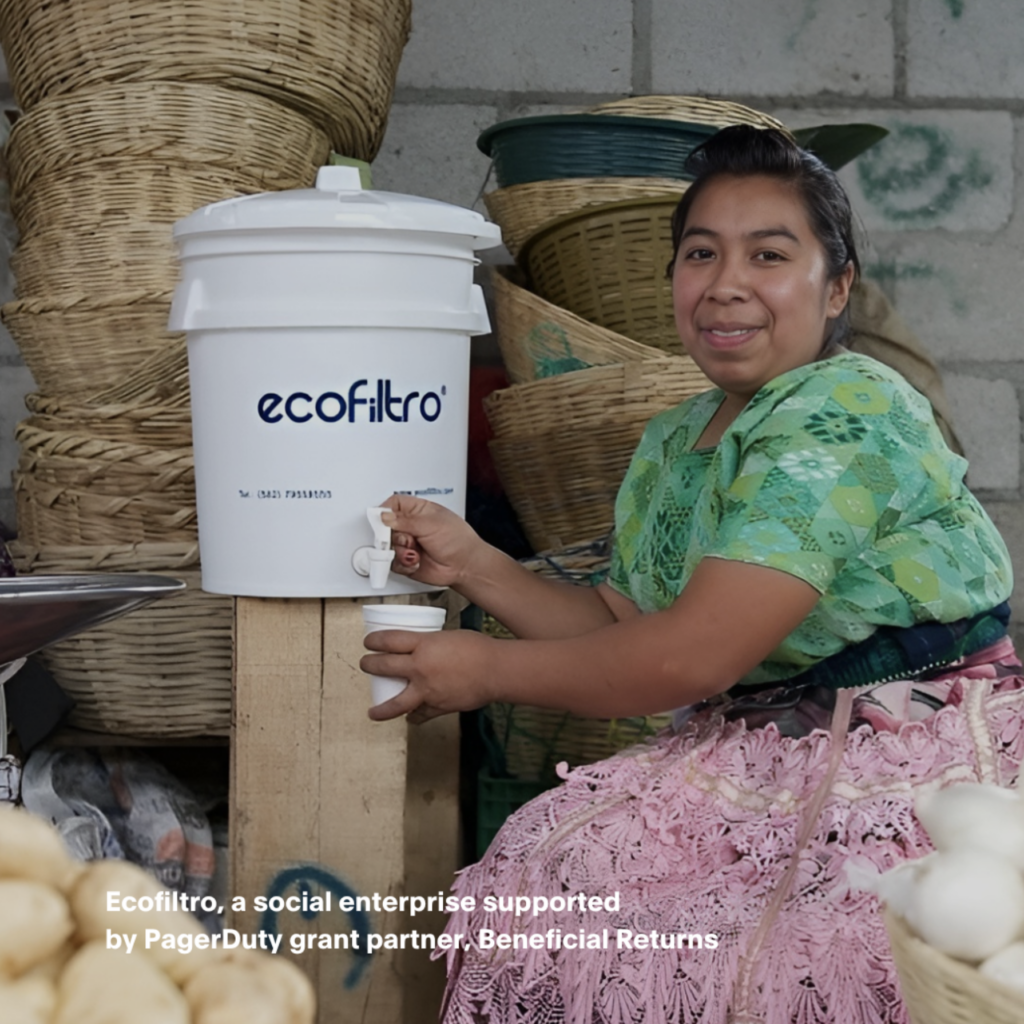Showing Up for Climate Equity Finds Hope: An Inspiring Conversation with The Solutions Project
The catastrophic effects of a changing climate are disproportionately felt “first and worst” by economically and socially marginalized communities around the world. Paradoxically, these communities globally typically contribute the least to climate change yet are rarely invested in or trusted to build solutions that put them at the center of healing and thriving. Despite the enormity of the crisis, less than 2% of climate philanthropy actually goes to climate justice solutions, and an even smaller percentage of this funding goes toward solutions created at the grassroots. As a new partner in climate equity, PagerDuty.org has taken an intentional learning approach to understand the needs of the space and how we can bring our company-wide resources to advance the needs of community-led organizations and their leaders. Earlier this year, we committed an initial $250,000 in unrestricted funding to four organizations working toward climate equity.
A key insight of our initial work in climate equity is that as a technology company, an important (and often overlooked) way to add value is by showing up with humility, listening, and investing in systems change. We are also committed to sharing our learnings with others so that we can build on each other’s work in a generative, rather than duplicative—or even extractive—way.
We are excited to share this conversation with The Solutions Project, one of our climate equity grant partners. We spoke with Sarah Shanley Hope, Vice President of Narrative Strategies, to learn more about why we need an equity lens to mitigate the climate crisis and how supporting grassroots movements and leaders is an important way to drive change.
The following conversation has been edited for length and clarity.
Sarah, can you tell us one thing that people who aren’t familiar with The Solutions Project should know about the work you do?
Our purpose is to fund and popularize climate justice solutions that are rooted in the communities that are at the front lines of the climate crisis. These are largely communities of color—Black, Indigenous, immigrant, AAPI, Latinx—communities that have been experiencing the worst of pollution and the climate crisis for decades. We know that those who are closest to the problems are also the first to find solutions. This is why we, The Solutions Project, exist—we see our role as supporting grassroots organizations in the United States and Puerto Rico on the frontlines of the climate crisis by providing grants and media training, and serving as a platform to amplify the voices of community leaders.
For those of us who may be new to the climate equity space, can you tell us what climate equity means and why it’s important?
I think it’s important to name what the dominant climate and environmental lens is because that’s what needs to be disrupted. The dominant lens is that climate change is strictly about greenhouse gas emissions. There are three reasons to expand this very singular lens to a more integrated one of climate and equity.
First, if we actually want to achieve emission reductions at the scale and speed that the science tells us we need to, then we have to look at who’s creating the most scalable solutions. An amazing organization that we work with, Native Renewables, is a perfect example among hundreds of others I could share. They have built affordable off-grid solar photovoltaic systems for Navajo and Hopi families living without electricity and primarily using diesel generators, today. Now, the challenge is how we take what they’ve created and help them scale it, because there are millions of households in the rural United States and across the world that would benefit from this technology. So, the number one reason to integrate climate and equity is that this lens creates solutions that can be scaled and adopted in the vast majority of the global context.
The second reason is about politics. We now have a diverse and younger voting and elected official demographic here in the United States. And, the political pathway to scaling green infrastructure is by addressing inequities and understanding the needs of “working class voters.” This group includes women, young people, and people of color who are feeling the impact of the climate crisis and are voting to push local and federal governments to fund green infrastructure, create good green jobs, ensure affordable housing and healthy places to live.
The third reason is moral. We have to understand the history of which communities have borne the brunt of our dirty energy economy over centuries; this is key to building a just transition to a green economy.
What does it mean to show up as a trust-based funder? How do you measure and evaluate your impact?
People who are passionate about climate change usually start by asking themselves, “What can I do?” We shift that approach to ask: “Who am I with?” Then, “What can we do together? Or “What’s already happening that I can support?”
When The Solutions Project was founded, we had a simple goal—100% renewable energy for 100% of the people. Very early on, we recognized that social change happens by rooting in ground-up movements for change. An idea like 100% renewable energy has actual meaning in the neighborhood organizations that meet the needs of their communities for healthy air, affordable utilities, and reliable infrastructure. From our earliest days, our grantmaking has brought dollars into these grassroots organizations. We trust that communities that are closest to the problem are going to be the first to the solution, and what they need are true partners who can respond to their requests for more momentum, money, and media attention for their successes.
Under the leadership of our CEO/ED,Gloria Walton, who came to the organization following decades building power in frontline communities, The Solutions Project now aspires to solidarity philanthropy. The difference between solidarity and trust is that solidarity involves showing up and mobilizing resources, co-creating, and sharing power with our partners. Solidarity comes through relationships that build trust.
So this gets to the impact measurement question. The status quo in philanthropy is laborious reports that require hours and hours of work. Funders ask for proof of every cent spent and the impact it achieved. Trust-based philanthropy takes away the laboriousness but it’s the same process: “Here’s an application, here’s a report format. Make the case for your work.” Instead of taking 20 hours, it takes five. Solidarity puts the onus on us. We spend our resources building media capacity for our grantees because what better indicator of impact and success than a Washington Post journalist deciding to write a story on a grantees’ success, for example. We also do an annual evaluation of ourselves through an independent evaluator to measure if we are effective, if we are doing what we say we are doing.
In the midst of constant dire news on the climate crisis, what gives you hope?
The climate crisis can be really overwhelming. It can feel very doom and gloom. So another thing I want people to know about The Solutions Project is that we’re your folks if you want to find hope. I’m not talking about hope in a bottle. I’m talking about real gritty, powerful hope that comes from a relentless determination to figure out the best solutions for really complicated problems. And frontline communities, communities of color that face the compounding crises of climate, pollution, a dirty economy, racism—they’re not waiting for somebody to come in and save them. They are solving big, complex problems and their communities are where we find hope.
Let me tell you a little more about Native Renewables so you have a clearer picture of their impact and hope “in action.” They bring solar power to families in Navajo and Hopi nations. The organization is founded and staffed by Navajo and Hopi people. Theircommunities have faced genocide, displacement, and continued disinvestment by the U.S. government; at least 15,000 homes Navajo homes have no electricity. Native Renewables founders Dr. Suzanne Singer and Wahleah Johns built an off-grid photovoltaic system right-sized from a cost perspective to replace what Native families were paying for diesel fuel to power generators. Their team has installed more than 100 kilowatts, bringing clean electricity to dozens of homes. The organization also built a workforce development program that provides Navajo and Hopi people with training and skill building needed to install and maintain the off-grid photovoltaic systems. This is just an incredible and hopeful example of what’s possible when communities have the resources to build solutions for themselves.
How can PagerDuty and peer tech companies best support you and the communities you serve?
Join us. No grant is too big or too small for The Solutions Project and our partners. I mentioned Native Renewables earlier. We know exactly how much those off-grid photovoltaic systems cost and what we need to scale them. Our partners have the solutions. They need the support to scale them. Our partners are hungry and ready for expanded support like marketing, design and communications expertise. The longer-term opportunities lie in thinking through how we bring the best of Silicon Valley and these technologies in support of the climate justice movement through the practice of solidarity. We’re not talking about charity. We’re talking about rooting in trust, and it’s aspiring to show up in new and innovative ways.
How do you and your partners think about the potential role technology can play in accelerating solutions?
I know there’s an actual match to be made between our two sectors, but I’m not sure how to go about it in a way that truly breaks the status quo. So I return to those questions: Who am I with? What can we do together? What’s already out there that we can complement and integrate with? As a technologist, you have to ask “Am I willing to be influenced? Am I willing to collaborate?” True collaboration means balancing listening and telling. It means not being in denial about where your expertise really lies when your goal is to solve social injustices.
As we build partnerships and explore how technology can help, the first thing we need is shared values. When we were first introduced to PagerDuty, it was your value system that most impressed us and made us feel like we can actually go on a journey together.
Can you share 1-2 actions our readers can take to support TSP’s work and further the outcomes you are working toward?
Yes! Visit TheSolutionsProject.org or follow us on LinkedIn, Instagram, or Twitter to learn more about climate justice solutions you can amplify or support. We also have a map of our grantees on the website that you can check out. As you consider your year-end giving, we hope you’ll find at least one new climate justice organization to donate to!


